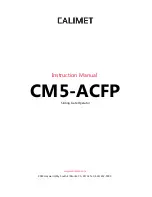
12
CARE OF YOUR OPENER
When properly installed, opener will provide high performance
with a minimum of maintenance. The opener does not require
additional lubrication. Lubricate springs and have your door
serviced by a professional service technician to maintain good
operating condition.
Limit and Force Adjustments:
These adjustments must be
properly set and checked when the opener is installed.
Weather
conditions may cause some minor changes in the door operation,
requiring some re-adjustments, particularly during the first year of
operation.
Refer to the limit and force adjustments on page 4. Follow the
instructions carefully and
repeat the safety reverse test after
any adjustment.
Remote Control Transmitter:
The lithium batteries should
produce power for up to five years. To replace batteries, use a
screwdriver blade to pry open the case along the side where
“Open” is stamped on the back. Insert batteries positive side
down. To replace cover, snap shut along both sides.
Do not dispose of old batteries with household waste. Take
batteries to a proper disposal centre.
Additional remotes can be purchased at any time for use in all
vehicles using garage. Refer to Accessories. The receiver must
be programmed to operate with any new remote.
MAINTENANCE OF YOUR OPENER
Once a Month:
Manually operate door to check for imbalance or binding.
Examine your installation, cables, springs and mountings
for wear or damage.
Call for professional garage door
service if necessary. To avoid possible injury, do not use until
repaired.
• Repeat safety reverse test.
Adjust if necessary.
• Check to be sure door opens and closes fully.
Adjust Limits
and/or Force if necessary.
Once a Year:
Oil door rollers, bearings and hinges.
The opener does not require
additional lubrication. Do not grease the door tracks. Refer to door
manufacturer’s maintenance instructions.
OPERATION OF YOUR OPENER
Your opener can be activated by any of the following devices:
• The wall mounted door control.
Hold the push button down
until door starts to move.
• The Outside Keylock or Keyless Entry System
(if you have
installed either of these accessories).
• The Remote Control Transmitter.
Hold the push button down
until the door starts to move.
• The left push button on the control panel,
when the opener is
not in a learn or limit setting mode (the indicator light must not be
on).
OPENING THE DOOR MANUALLY
Door should be fully closed if possible.
The door can be opened manually by pulling the trolley release
handle down and back (toward the opener). To reconnect the
trolley, pull the release handle straight back. It will reconnect on
the next up or down operation.
Do not use the manual release handle to pull the door open
or closed.
WHEN THE OPENER IS ACTIVATED BY THE REMOTE
CONTROL OR WALL MOUNTED DOOR CONTROL:
1. If open, the door will close. If closed, the door will open.
2. If closing, it will reverse
3. If moving, the door will stop.
4. If the door has been stopped while moving, it will next move in
the opposite direction.
5. If an obstruction is encountered while closing, the door will
reverse.
6. If an obstruction is encountered while opening, the door will stop.
7. The optional Safety Infrared Reversing Sensor uses an invisible
beam which, when broken by an obstruction, causes a closing
door to open and prevents an open door from closing. It is
STRONGLY RECOMMENDED for homeowners with young
children.
The opener light will turn on:
1) when opener is initially plugged
in; 2) when the power is interrupted; 3) when the opener is
activated.
The light turns off automatically after 2-1/2 minutes. Bulb size is
40 Watts maximum (240V, ESRC).
114A2991






































